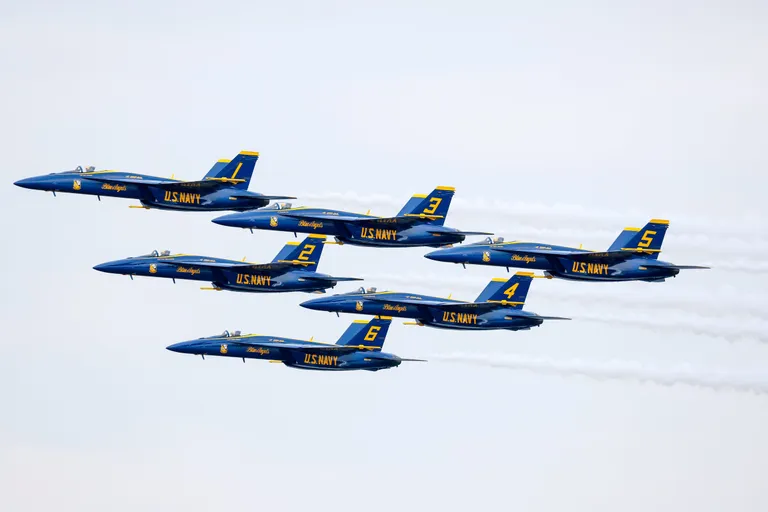It’s time to salute and say goodbye to the Blue Angels at Seafair. Although we need skilled fighter pilots to defend our nation and our allies from enemies, these airshows cause significant health harm.
A recent Seattle Times article stated “no data exists that can measure the team’s impact or influence” on recruiting. That’s true for noise, too: No one has publicized Angel noise at Seafair. General estimates are between 100 and 110 decibels; you can measure it yourself with a decibel-measuring smartphone app and send results to the Seafair Board, seafair.org and the Seattle Special Events Office (specialeventsoffice@seattle.gov). Although jet noise may be the “sound of freedom,” long or repeated exposure to sounds above 85 decibels can cause hearing loss, and for every 3 decibel increase above 85, the safe listening time is cut in half.
A study of noise from the F/A-18 — the Blue Angel plane — at Naval Air Station Whidbey Island found “over 74,000 people were at risk of adverse health effects. Of those exposed, substantial numbers were estimated to be highly annoyed and highly sleep-disturbed, and several schools were exposed to levels that place them at risk of delay in childhood learning.” South Seattle Seafair neighbors suffer similar noise risk.
We’ve known for years that fossil fuel exhaust is harmful to lungs, hearts and even brains. According to the Navy, each Angel plane burns at least 1,500 gallons of jet fuel per hour. The Navy’s fuel requirements for this year are 70,550 gallons for one to two days of preshow local practice flights, media and “influencer” rides, a support aircraft and the weekend shows. That’s about 670 metric tons of carbon dioxide, contributing more to climate change than 30 cars would by driving 150,000 miles each — for just one weekend of fun. Seafair crowds and neighbors in South Seattle pay not just the cost of a ticket, but also suffer health harm from highly inhalable PM 2.5 particles. Washington Department of Ecology’s Environmental Health Disparities map identifies South Seattle as an overburdened community highly affected by air pollution.
The goal of the city’s One Seattle Plan is to reduce “core greenhouse gas emissions by 58% from 2008 levels by 2030, and attain carbon neutrality by 2050.” We’re not going to get there. Today’s carbon dioxide level is 425 parts per million and climbing, way past the safe upper limit of 350 ppm. Mother Earth has a fever. Last year was the hottest since records were kept, and July 22 was the hottest day ever. The Angels only make it worse.
What must we do? The same thing I tell my patients who eat or drink too much: Cut back! Washington Physicians for Social Responsibility, of which I am a member, says harm reduction is a core element of risk management for human and environmental health. We must follow the law and the science, and reduce fossil fuel use and harmful pollutants. Boeing makes the F/A-18 planes but also experimental electric-powered aircraft. Thank the Blue Angels for their service and past shows, say goodbye and move on to quiet planes, cleaner air and healthy family fun. Let’s honor the past and define the future. Let’s reimagine Seafair without the Angels.
Breck Lebegue was an Air Force flight surgeon for 30 years, in command, clinical and research positions. He’s a member of WA Physicians for Social Responsibility.
